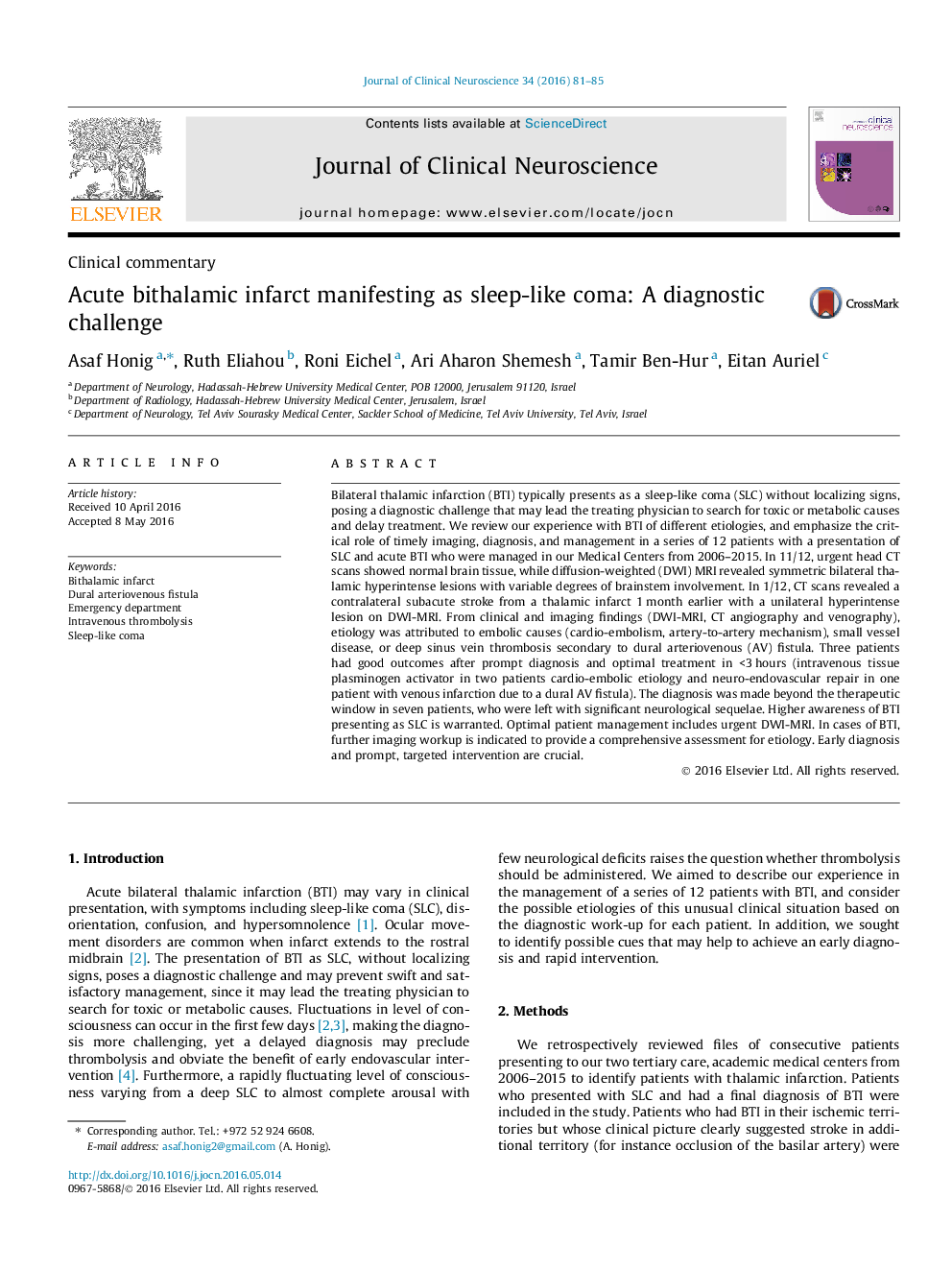| کد مقاله | کد نشریه | سال انتشار | مقاله انگلیسی | نسخه تمام متن |
|---|---|---|---|---|
| 5629858 | 1580282 | 2016 | 5 صفحه PDF | دانلود رایگان |

- Bithalamic infarction (BTI) may cause varying degrees of sleep-like coma.
- Urgent MRI with a diffusion-weighted sequence, facilitates this challenging early diagnosis.
- Acute intervention with intravenous tissue plasminogen activator (IV-tPA), is associated with good outcomes.
- Most BTI patients without IV-tPA treatment developed severe neurological deficits.
- Further imaging work-up of BTI patients is indicated to determine etiology.
Bilateral thalamic infarction (BTI) typically presents as a sleep-like coma (SLC) without localizing signs, posing a diagnostic challenge that may lead the treating physician to search for toxic or metabolic causes and delay treatment. We review our experience with BTI of different etiologies, and emphasize the critical role of timely imaging, diagnosis, and management in a series of 12 patients with a presentation of SLC and acute BTI who were managed in our Medical Centers from 2006-2015. In 11/12, urgent head CT scans showed normal brain tissue, while diffusion-weighted (DWI) MRI revealed symmetric bilateral thalamic hyperintense lesions with variable degrees of brainstem involvement. In 1/12, CT scans revealed a contralateral subacute stroke from a thalamic infarct 1Â month earlier with a unilateral hyperintense lesion on DWI-MRI. From clinical and imaging findings (DWI-MRI, CT angiography and venography), etiology was attributed to embolic causes (cardio-embolism, artery-to-artery mechanism), small vessel disease, or deep sinus vein thrombosis secondary to dural arteriovenous (AV) fistula. Three patients had good outcomes after prompt diagnosis and optimal treatment in <3Â hours (intravenous tissue plasminogen activator in two patients cardio-embolic etiology and neuro-endovascular repair in one patient with venous infarction due to a dural AV fistula). The diagnosis was made beyond the therapeutic window in seven patients, who were left with significant neurological sequelae. Higher awareness of BTI presenting as SLC is warranted. Optimal patient management includes urgent DWI-MRI. In cases of BTI, further imaging workup is indicated to provide a comprehensive assessment for etiology. Early diagnosis and prompt, targeted intervention are crucial.
Journal: Journal of Clinical Neuroscience - Volume 34, December 2016, Pages 81-85